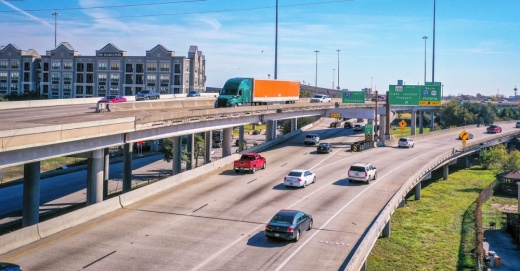In what ways can multiple governing entities collaborate to move transportation projects forward in 2022?
Roads don’t end at county lines, at city lines; you would be hard pressed to find a road project that doesn’t cross over multiple districts or precincts. The ability to work together is critical. I think it’s challenging when you have counties that are similar in some ways, but more different in other ways in the layout of the county infrastructure. ... Houston has continued to grow, and the urban core is experiencing different challenges—growing challenges—than the rural outlying areas.
Some of the challenges of the rural outlying areas are experiencing are because of the core. You really have to work on the core for the outlying areas to benefit.
A great example is the I-45 project. ... Part of the challenge with road projects [is that] they take a long time to come to fruition. I-45 planning starting 15-20 years ago, and the leadership was different; the growth, the density, some of the challenges [were different], so the things we looked at 15 years ago, you fast-forward, and so much has changed. What we’re looking at now won't hit construction until 10 years from now, [so] how do we avoid this happening again? Certainly now with remote work people have more options as to where they can live. You’re not beholden a particular place or region, [and] all of that has really shaped and changed a lot of the conversations around transportation.
How has the pandemic affected ongoing conversations around transportation?
I-45 has taught us a lot and ... I think the timing of how it all came to a head recently, during the pandemic, was the perfect storm of just trying to walk through perhaps some of the most difficult challenges leadership [has] had in some time and trying to make big decisions about major projects. How do we navigate not being able to be in person and [still] have conversations and [make] major decisions? I think we have to say this may not be the only time we have something like this where we will be isolated.
Has TAG-Houston's annual Motion Map [showing major mobility funding needs in the region] been updated for 2022?
The Motion Map is typically updated annually. Not entirely because of COVID[-19], but certainly it’s impacted it, the map hasn’t seen any drastic changes to the map from last year.
We’re going to spend this year really looking at expanding the map to some of the other contiguous counties, Montgomery County being one of them. To do that in a meaningful way we need another year because of the inability to get everyone around a table. You’ll see a 2023 version that will come out. ... There will definitely be newer projects that are even in the planning process. While the world has paused a bit, some of the planning has continued. There will be some new things as well as work that was done a lot faster because there was no traffic on the roads. We’ll have to look at it again in another year; [that] helps us look at where the funding falls.
How do you expect the federal infrastructure bill [the Infrastructure Investment and Jobs Act] to affect local projects?
We are watching what happens with the appropriations bill that has to fund the infrastructure bill. The rules will be announced soon ... and things will trickle out for the next five to 10 years. We hosted a conversation in early December talking about the different grant possibilities. There will be more competition for some of these grants, and some of this funding won’t always have to go through a government agency. There’s a lot with electric vehicles, charging infrastructure ... it’s a wait and watch and see, but the appropriations piece is huge; we have to get it and agree on how it’s funded.
How do you expect the changes in Harris County precinct boundaries to affect mobility projects?
There's a lot of tension because of it. How does that impact having important conversations about projects—how we’re funding things? When there’s tension bubbling, it’s difficult to have those difficult partnership conversations. ... It won’t necessarily impact individual precincts because they are allotted money ... but that formula, that could change. The top-down decisions could be shaped by this, and it’s kind of an unknown. It’s important to go back to agreeing on shared values, vision. What are some hallmarks that we can say, "No matter what the leadership is, we agree on this?"





